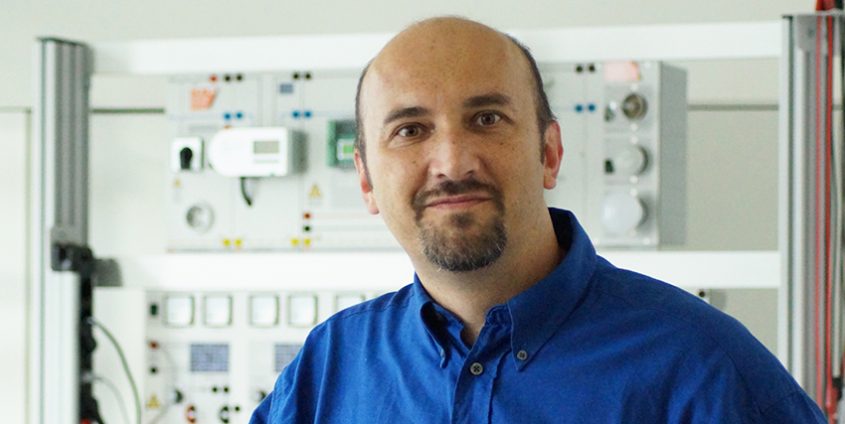Organising energy at home
Energy management systems are designed to support people’s efforts to consume less electricity. However, as Smart Grids expert Wilfried Elmenreich explains, these systems are still grappling with a range of issues. Together with his team of researchers he is looking at simple ways to ensure that anyone can use these systems.
Until recently, the computer in the Elmenreich’s family home was permanently switched on, even though it wasn’t being continuously used. A device that analyses the power consumption provided feedback indicating that the computer consumes quite a lot of electricity, and as a result it is now increasingly switched to standby mode. “Often, we simply don’t realise which terminal devices have which levels of power consumption, and how easily we could reduce these levels”, Wilfried Elmenreich, Professor for Smart Grids (Institute of Networked and Embedded Systems) explains. He and his team are working on improving energy management systems. Specifically, the aim is to steer the energy consumption in such a way that – wherever possible – devices operate when there is sufficient energy available, that the system delivers useful feedback on the consumption levels to the consumer, and that the consumption of external energy supplies is calibrated to any own production (e.g. through solar panels).
Nowadays, most of the households equipped with energy management systems contain several devices which are already endowed with the required intelligence. In this context, intelligence means that they can be embedded within a system, which monitors and controls the device, and which also allows it to communicate with other components. But, even with a complete set of intelligent equipment, a number of problems would still remain, Elmenreich points out: “To date, there is no common standard, which means I would have to purchase every single device from the same manufacturer in order to attain optimal functionality.” This situation is barely affordable. “In most instances intelligent devices are available in combination with non-intelligent devices.” This is where so-called smart plugs enter the scene: they can be inserted between the power socket and the power cord. However, it is necessary to buy a separate smart plug for each terminal device. The research team hopes to solve this problem by using an intelligent ammeter and an analysis model: “Most devices feature characteristic consumption patterns. For instance, in the case of fridges there is a cyclically recurring start-up of the compressor, which regulates the temperature. Consumption increases at these points in time. Modern fridges even reveal when the fridge door is open, because the interior lighting also uses electricity, and the compressor has to switch modes in order to lower the temperature again.” Based on the technology of the “load disaggregation principle” it is possible to determine which device is consuming which level of energy, without the need to integrate any additional plugs.
This information remains solely within the household and provides the users with feedback. “Thus, we are able to address the concerns of those individuals who are worried about data protection.” Elmenreich regards the person using energy as a part of the control loop, where often the simple awareness of the consumption is sufficient to trigger a behavioural change. According to Elmenreich, energy management systems of this kind are currently in an in-between-state, and the primary focus should be on solving the interoperability issue. “It’s fair to say that these systems serve as a good starting point.”
Romy Müller for ad astra
Egarter, D., Monacchi, A., Khatib, T. & Elmenreich, W. (2015). Integration of legacy appliances into home energy management systems. Journal of Ambient Intelligence and Humanized Computing.
Egarter, D., Bhuvana, V. P. & Elmenreich, W. (2015). PALDi: Online load disaggregation via particle filtering. IEEE Transactions on Instrumentation and Measurement, 64:467–477.
This research was conducted jointly with Lakeside Labs GmbH and was funded by the Carinthian Economic Promotion Fund.










 aau/Müller
aau/Müller
